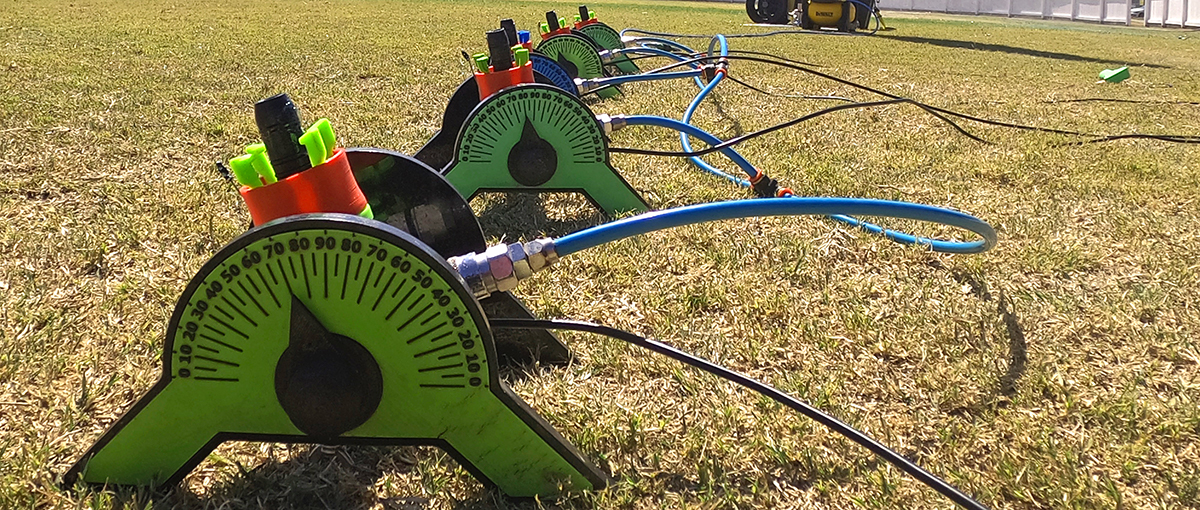When comparing water bottle rockets for use in schools, there can be a huge variation in quality, safety and price. So we look at the top five things to look for when using bottle rockets in your science and maths classes at primary or high school.
Rockets make a great tool for education. Depending on the relevant Australian Curriculum achievement standards for science, mathematics, technology and design for your year level, teachers can use rockets as an engaging and inspiring tool to improve learning outcomes in a variety of ways. You may use rockets to help students investigate movement and motion, forces, physics, flight and space science, probability and statistics or even sustainability.
Water bottle rockets are the ideal way to provide an immersive learning experience in your school. But there are a range of alternatives on the market, each with advantages and disadvantages.
So here are the top five criteria for choosing the right bottle rocket launcher.
1. Bottle rocket safety
There is a huge variation in safety standards among bottle rockets.
Your rocket launcher should allow students to stand away from the launch pad so that they are not in the rocket’s path. You should have full control over exactly when your rocket will launch, and where it goes.
Many commercially available bottle rockets launch a projectile at a 90 degree angle, directly into the air, not allowing you to ensure that rockets are directed away from students. It’s Rocket Science launchpads allow you to adjust the angle of launch to suit your circumstances (and wind direction).
You should also ensure full control over when the rocket launches, with a hand held launcher that can be controlled even by students with low muscle tone or motor skills. Many commercially available bottle rockets will launch when air pressure is maximised, or with an unreliable ring pull on a string.
2. Rocket performance
To demonstrate scientific concepts and to create an inspiring and immersive learning environment for your students, you want a rocket launch that will exceed expectations and work reliably. Every. Single. Time.
You don’t want a failure to launch, or a fizzer that takes off momentarily before flopping back onto the ground. You only have to go as far as Youtube to find many entertaining, but disappointing, examples of bottle rocket failure. Your students will be more distracted by your failure than by the scientific concepts you are trying to demonstrate.
It’s Rocket Science launchpads will successfully launch bottles up to 60 metres in the air. This is twice the altitude promised by cheap, commercially available products. Furthermore, you can conduct fair testing experiments where you vary the amount of water or air pressure used, or the launch angle (only one variable at a time for accurate data collection of course!). Then you can go for altitude, velocity or distance and engage your students in observation, hypotheses and reporting their experiment’s results.
3. Comparing value for money
Of course, there are many cheap bottle rocket launchers on the market that would allow you to purchase two kits for an average of $4 per student. But as the saying goes, “you get what you pay for.” Cheap plastic parts and variable performance is the trade off. And you only get what’s in the box – no extras, guides or lesson plans.
Quality construction and parts, servicing and long term usage should be the goal in this age of sustainability. The more times you can use the product before it breaks, the more cost effective it becomes, making it even cheaper than an incursion (on a per student basis). Borrow an It’s Rocket Science Box for a year and you’re looking at $4.95 per student (based on an average school of 500 students only using the equipment once).
4. Educational benefit
Look for a rocket science kit that includes educational resources (online), in addition to the hardware, to make your life easier as a teacher. Rockets are a versatile teaching tool for a variety of science, engineering, technology and maths applications and a little creativity will see you using a quality educational resource with every year level of the Australian Curriculum, from learning about forces, to living things, to sustainability and our place in space.
5. Accessible and inclusive learning
The design of the bottle rocket launcher should allow for students of different sizes, ages and developmental needs to participate. It’s Rocket Science squeezable handles are great for students with low gross motor skills, very tactile for learners and immersive, creating positive learning experiences for students who may otherwise be disengaged or disinterested.
It’s very easy to connect and get started the It’s Rocket Science equipment, with plug and play (or click and twist) style setup, so you can get your students involved with helping, setup and packdown. Bottles can be easily filled and pushed onto the launch spout and the launch pad has a sturdy base so it won’t topple over or fall with a strong gust of wind. Preparing for launch happens with a minimum of fuss, making the launch process simple and accessible for all learners.
In summary, not all water bottle rocket launchers are created equally. While there are cheap alternatives, you need to ensure your rocket launcher is fit for the purpose of STEM learning so that there are no disappointed students on launch day.
If you’d like to find out more about It’s Rocket Science In A Box, the curriculum based lessons, or the accessories included in the subscription box, have a look here, or feel free to get in touch.

